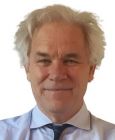Neuroscience
What Is It Like to Be a Parabrachial Nucleus?
The physical basis of subjectivity.
Posted December 16, 2020
David Chalmers’s formulation of the hard problem of consciousness owes a large debt to Thomas Nagel’s earlier paper, "What is it like to be a bat?" There, Nagel pointed out that “An organism has conscious mental states if and only if there is something it is like to be that organism—something it is like for the organism.”
Nagel added: “If we acknowledge that a physical theory of mind must account for the subjective character of experience, we must admit that no presently available conception gives us a clue about how this could be done.” He concluded: “It seems unlikely that any physical theory of mind can be contemplated until more thought has been given to the general problem of subjective and objective.”
I agree. But we do now have a physical theory of subjectivity. I must be brief in this blog format, so I cannot describe the facts comprehensively. I have space only to provide what Nagel calls “a clue.” For the details, please read my forthcoming book, The Hidden Spring.
I have argued that the hard problem was made harder by the fact that we used cortical vision as our model example of consciousness. There is abundant evidence that cortical vision (e.g., recognizing faces and reading with comprehension) can occur unconsciously. In other words, cortical vision is not intrinsically conscious. That makes it a bad place to seek the physical basis of consciousness.
A better place is the part of the brain that arouses cortical processing and renders it conscious, namely the reticular activating system. Consciousness is preserved in human patients born without cortex and in experimentally decorticated mammals, but it is lost with damage to this brainstem system. Crucially, in patients and animals without cortex, emotional responsivity and intentionality are preserved, whereas all consciousness is obliterated with damage to the reticular activating system. This reveals a hierarchical dependency relationship between the cortical and brainstem forms of consciousness: The brainstem form enables the cortical one.
So, let’s take a closer look at this foundational form of consciousness. The smallest area of damage that reliably produces coma in human beings is a 2 mm3 part of the parabrachial complex. What does this structure do? In a word, homeostasis. The set of homeostats that comprise the parabrachial complex monitor the state of your body and act upon it—thereby maintaining your required oxygen, temperature, and blood sugar levels. One of the ways it does this is by arousing the forebrain into action and generating feelings.
What does this have to do with what it is like to be an organism for the organism? Well, everything.
If organisms don’t maintain their required oxygen, temperature, and blood sugar levels, they cease to exist as organisms. In other words, they die. Actually, first they experience the distressing feelings of suffocation alarm, freezing, and fainting, and then they die… unless they do something about the feelings before it’s too late. This reveals what feeling (the most basic form of consciousness) is for: It tells you how you are doing within a biological scale of values (it is "good" to survive and "bad" to die), and it arouses your forebrain to act accordingly, to preserve your existence.
Homeostasis evolved with self-organization. Self-organizing systems, which arise naturally under primal-soup-like conditions (see Friston, 2013), have an aim and purpose: They actively maintain their own structural and functional integrity. At the deep level of explanation demanded by physics, this is how living things resist the Second Law of Thermodynamics—the law which states that entropy always increases in natural processes.
"Entropy" means dissipation. Death by hypothermia is a good example of it. We humans must remain within the temperature range of 97.7-99.5 °F; we cannot afford to dissipate across all possible temperatures. If we get much colder than 97.7 °F (i.e., if we equalize with the ambient temperature), we die.
So, we must resist equalization. This resistance requires work—the work of homeostasis—which (in my model example) warms you up by changing your respiration rate and blood pressure and by moving you to a warmer location. This is the absolute, fundamental basis of goal-directed behavior and intentionality.
To perform such work, homeostats must be bounded. That is, self-organizing systems must separate themselves from their not-self surrounds. This is how they come into being.
The forming of this boundary (known as a "Markov blanket" in statistical physics) enables such systems to sense and react to surrounding events without becoming confluent with them. In other words, it enables a system to register its ambient surrounds vicariously, as states of its own blanket, and then work to maintain its internal states within the system’s viable bounds.
This sequestered form of existence, which is characteristic of self-organizing systems, gives them a point of view. The boundary maintaining the being of such systems bestows selfhood upon them. This is the ground-zero basis of subjectivity.
The parabrachial complex is a self-organizing system, comprised of several subsidiary homeostats, each with its own control center and a receptor/effector boundary. The parabrachial nuclei, in turn, consist of cells; that is, in many thousands of smaller homeostats, each wrapped in a membrane. Conversely, the parabrachial complex is part of a much larger network of homeostats, which, together, comprise the nervous system as a whole. This is the structure of sentient life as we know it: billions of little homeostats, wrapped in their Markov blankets, all nested within each other.
The full story of "feeling homeostasis" is more complex than the story I’ve told you here. But I hope you get the nub of it. As I said, this is just a clue…
References
Friston, K. (2013) Life as we know it. Journal of the Royal Society Interface, 10: 20130475, doi.org/10.1098/rsif.2013.0475
Solms, M. (2021) The Hidden Spring: A Journey to the Source of Consciousness. New York: WW Norton, London: Profile Books.




